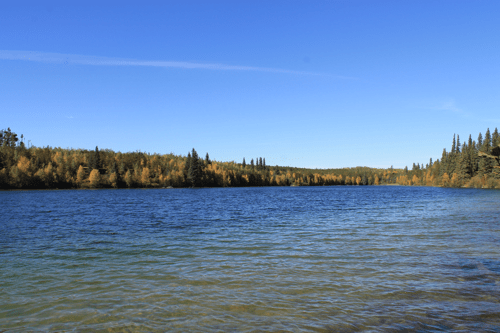“When you have a wind turbine go down it can be a very long outage – it can be an expensive thing to fix.”
— Meera Kohler, CEO Alaska Village Electric Co-operative
Renewable energy co-ops have the potential to be a boon for remote, northern communities – that is, if these communities can get them.
Like most large infrastructure projects, the cost benefit analysis requires taking a long view. But with a bit of time factored in the benefits of renewables in the north add up. The problem for most of these communities is lack of capital and challenging logistics.
In the best of circumstances, renewables, such as wind and solar, have high upfront capital costs, which are a deterrent for many homes and communities. On tundra, with no roads, the need for expertise, and a month or two with no sun, the capital costs can grow significantly.
“[Renewables] are very appealing – just the concept of them – but they are technically so much more challenging than diesel generation,” said Meera Kohler, CEO of Alaska Village Electric Co-operative. “The problem is diesel is a well-known technology and you can find diesel mechanics all the time, can get parts, etc. When you have a wind turbine go down it can be a very long outage – it can be an expensive thing to fix.”
Diesel-generated power is currently the most pervasive form of power generation in the north. The benefits of diesel are that it’s consistent, performs well in microgrids, and can be shipped to places without roads. Plus, local people are familiar with the technology, its installation and maintenance.
But the drawbacks are numerous and growing. Transporting diesel by plane or barge to remote communities is expensive, as is the fuel itself. With the looming threat of a carbon tax, this cost is likely to increase.
Plus, both transporting and using diesel fuel can result in spills – and spills can be hard on the local environment, cost a great deal of money and time to clean up, and potentially create negative health impacts.
The good news is the cost of renewable infrastructure is continuously dropping. The price of solar panels has fallen 80 per cent in the past five years, and lithium-ion battery prices have fallen 40 per cent since 2010.
Wind turbines, too, are dropping in price and being adapted to function better in Northern temperatures. Technological advances are also bringing down installation and maintenance costs. Currently, cranes are rented and transported to the north at great cost. But a crane-less installation is in the works, as is the development of “ballasted” foundations for turbines that do not require concrete – previously a crucial feature of operating on tundra.
These advances mean renewable energy, and renewable energy co-ops, is becoming a more viable option for Northern communities.

Kohler said AVEC is slowly but surely working towards renewables, and members of AVEC like the idea of renewable sources of energy.
But, to make the switch, the co-operative must be strategic. Currently about five per cent of AVEC’s electricity is generated by wind power.
“We do it as it is practical and affordable,” Kohler said. “The payback period for alternative energy is much longer, but is offset by declining cost of capital construction, which is why I’m a little excited about solar.”
With 34 wind turbines in 15 villages, AVEC has the highest number in the state. However, so far only two villages have solar installations, which is a number Kohler hopes to grow.
So, while the short-term pain of high capital costs is significant, the upfront costs are decreasing and the long-term benefits for these communities will be significantly lower energy costs with less negative environmental impacts.
In Canada, 257 remote Indigenous communities rely on their own microgrids for electricity. Most of these communities are diesel-powered. Together, they consume 90 to 120 million litres of the fuel annually.
The Government of Canada has committed to supporting renewable energy projects in Indigenous communities. In the 2016 federal budget, $21.4 million was earmarked over four years for the development of renewable energy projects for communities currently relying on diesel energy.
Local co-operatives may be a way for communities to create capacity, capitalize on federal funds, and in time benefit from reliable energy from a lower cost and cleaner source.
Interested in reading about more renewable energy co-ops? Stay up to date by signing up to our newsletter.







